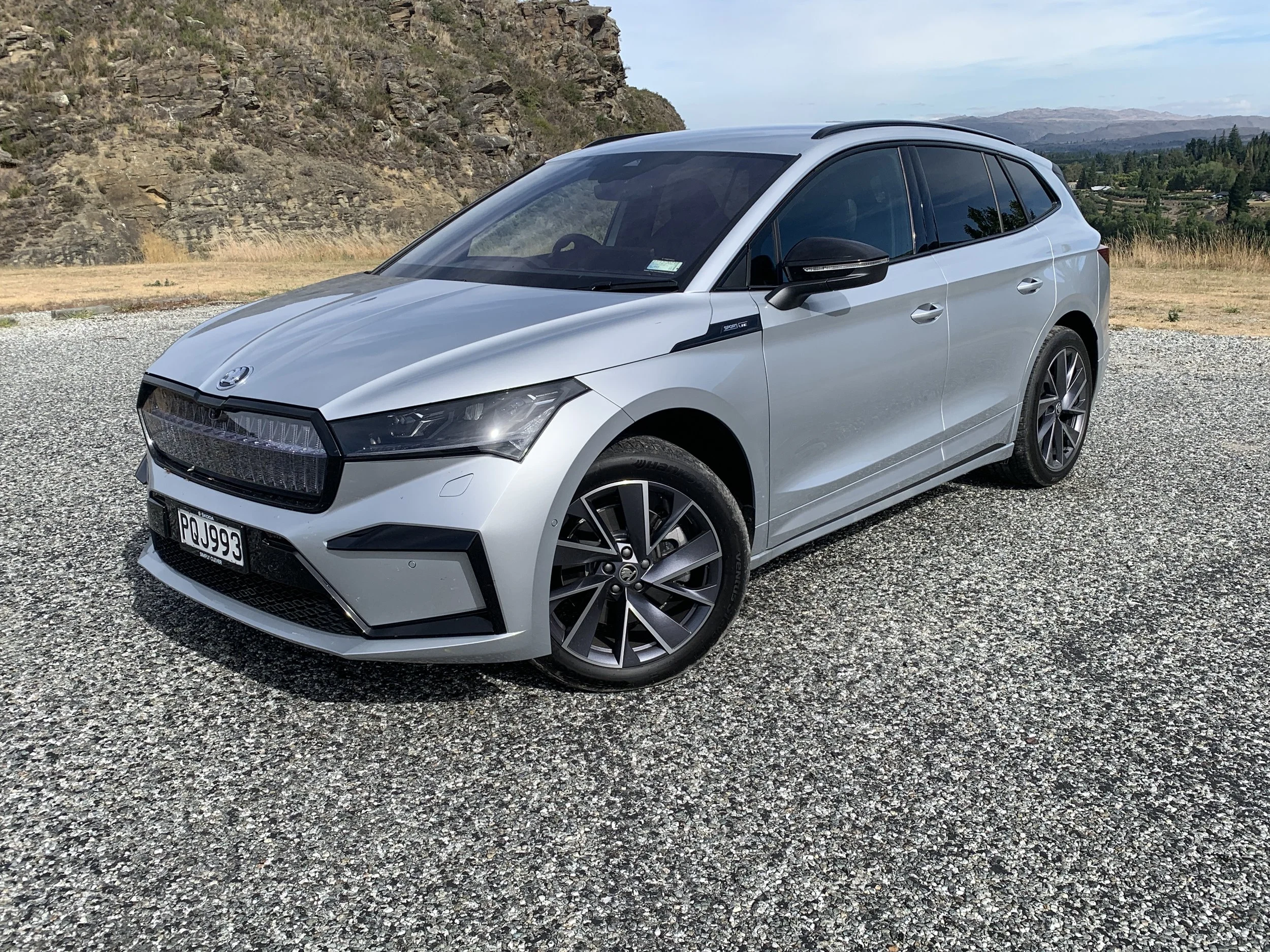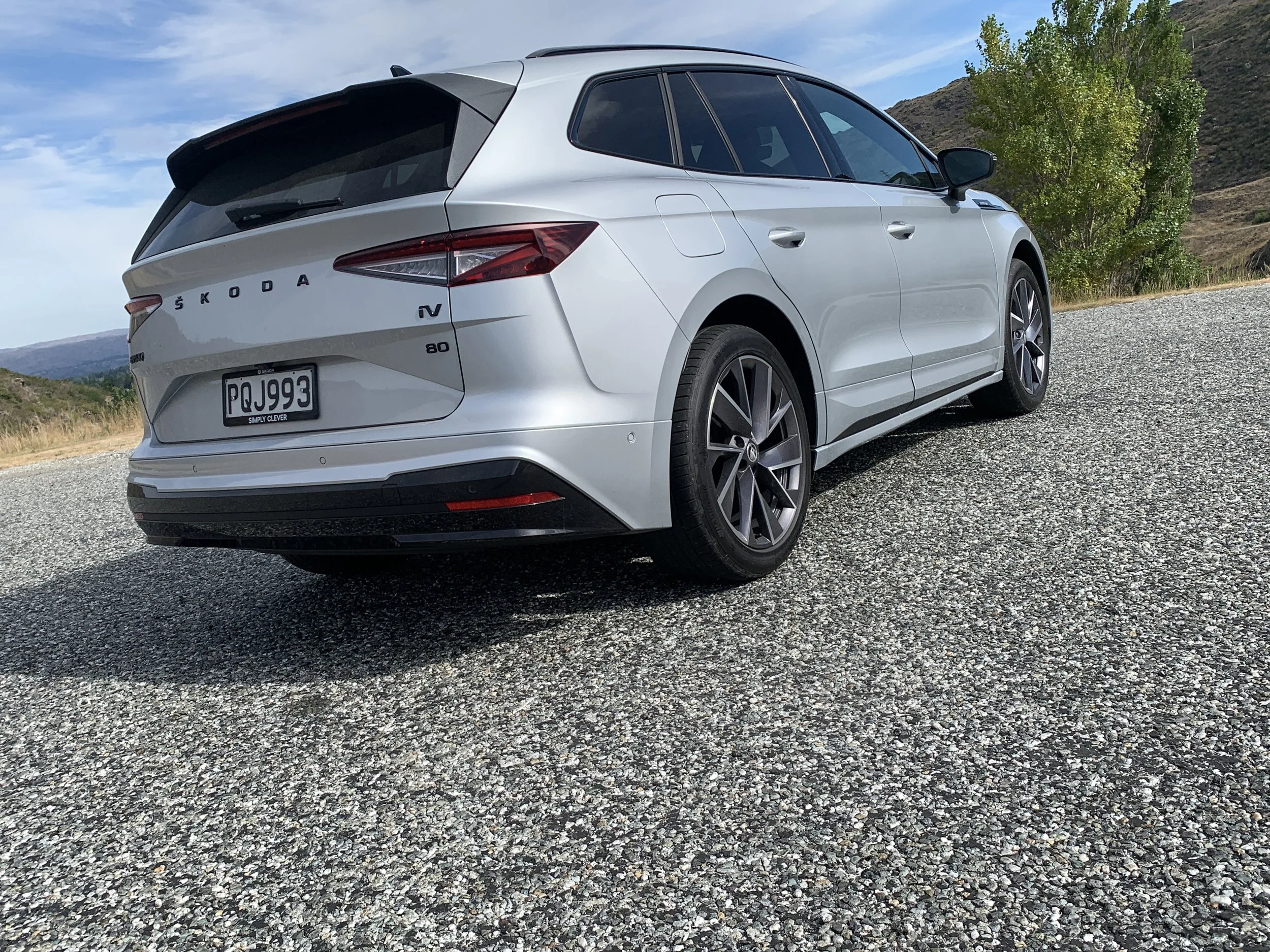Enyaq price plummet won’t last
/In explaining how $13,000 across-the-board reduction was achieved, Skoda NZ has also warned the new stickers won’t be permanent.
MASSIVE price alignment for Skoda’s impending Enyaq that slices almost $22,000 off the entry car when a rebate it’s now eligible for applies might well rise in early 2024 - but there’s no hard and fast timeline.
That’s the signal from Skoda New Zealand, in explaining a $13,000 across-the-board price cut to its vital new electric.
The model has dropped from $92,990 to $79,990 and $97,990 to $84,990 respectively in base and Max formatted sports utility shape and from $102,990 to $89,990 in the flagship Coupe, also in Max trim.
The base car’s new price makes it eligible for the Clean Car rebate, though this will be the $7015 payout effecting on July 1 rather than the $8625 return given out presently.
Even so, with the altered rebate, the cheapest edition becomes a $72,995 buy-in - so $20,015 less than it was when NZ model prices were announced in mid-February.
Without or without the inducement, that derivative is now the same money as the sister Volkswagen ID.4, with which it and the other Enyaqs share a common (MEB) platform and drivetrain - comprising a 82kWh (77kWh usable) lithium ion battery and a single motor making 150kW and 310Nm, for up to 518 kilometres’ range.
It is also lineball with another new entrant, the base - and also rear-drive - Ford Mustang Mach-E (198kW/430Nm, 75.7kWh), a Hyundai Ioniq 5 and two Kia EV6s.
It is $2000 dearer than the new Cupra Born, also with the same battery, motor and platform as Enyaq, but dimensionally smaller.
There is a caveat about the prices in that they specifically apply to current generation models, the cars unveiled in February and now being used as demonstrators ahead of customer stock landing in September.
Skoda NZ is now calling these “launch edition” cars and says their production will conclude in December.
After that, the factory will implement updates, the full span of which has yet to be explained, that prioritise for Europe but will include in NZ cars next year. These changes will unavoidably affect the price, the local agent has indicated.
Says Gillard: “When the new technology comes out next year then we will have to renegotiate, but with those (updated 2024) cars we expect price change.
“What we are doing now is pretty much going to be a one-off. I don’t see a Sportline at this premium specification to be $79,990 in the future.”
There’s no cap on launch edition production - the factory can build as many as Skoda NZ seeks. It’s been speculated that it has had to order as many as 600 cars to maintain a production slot -a potentially perilous count given the resistance to the original pricing that it has acknowledged.
It’s been made clear that the ultimate allocation will be largely dictated by how many orders it now takes and that, in turn, will influence how long they remain in stock. Gillard imagines there will be enough to last into at least the first quarter of 2024.
“The only question to me and my team and the dealers is how quickly we sell them. Because once they are gone … well, this pricing is for launch edition only. This is all about timing; it’s a nice timing to take an advantage with the updates coming. We’re extremely happy with this.”
The updated editions coming after that WILL cost more, he’s sure of that. But how much more? Potential of the original stickers being revived seems highly unlikely, he has indicated.
Skoda NZ shared the amendments to media and dealers on Wednesday night but sought to keep the information under embargo until this morning so early sign-ups - around 20 customers - could be advised.
Unfortunately, that plan went awry when the new stickers went live on the brand’s website yesterday - just for a few minutes, but long enough for an eagle-eyed fan to post a screen shot on a popular electric vehicle owner Facebook page.
Gillard has not shared what variants have been most popular, but he has voiced expectation that some orders might change, with thought some who had chosen a Max might now see more value in taking the entry car and enjoying the bigger saving. That base model has yet to be seen in NZ, likewise the Coupe. Only Ireland-market Max editions of the SUV are here for promotion.
There is no need for refunds as those who have committed to the car have only had to pay a $1000 holding fee.
In speaking to the original strategy and the reasons for this realignment - the cost of which is described as a three-way share between dealer network, the distributor and the factory - Gillard has refused to accept the original pricing was an error.
Rather, he says, it was an unavoidable outcome of a set of circumstances guiding the brand locally and at factory level that have since changed.
However, he is confident that in repositioning, Enyaq V is now better placed to appeal to customer expectation about Skoda being the brand sitting at the canny end of the Volkswagen Group’s price spectrum.
“The bottom line is we’ve now been able to achieve Enyaq Sportline at a price point we think it going to really satisfying.”
Achieving buyer interest in the car over the past three months had been problematic, he conceded.
“Our sales rates were slow, they weren't the greatest.”
In addition, since the car’s national unveiling, the brand had identified “quite a lot of activity in the electric car supply chain with certain new brands coming on board” with prices and specifications that presented a challenge.
Feedback about the original pricing clearly indicated potential buyers weren’t happy and felt it jarred with Skoda’s ‘value’ brand ethos.
In March, the factory had made clear that it could only avail a premium level specification for NZ-market Enyaq and that meant it would have to carry a premium level price. The scenario then was quite challenging, Gillard says.
“The factory didn't give us the ability to have a full portfolio. So it came down to we either went premium or we went very entry level spec, which was also going to come in at medium to high pricing. That's why we went premium.
“(But) then seeing the sales rate, we were heading toward losing production and and we didn't want to do that. So we were renegotiated with the factory. They've given us some support and we are away with a completely new price range on the exact same car.”
Gillard says the importance of having a car under the cut-off for assistance and Government’s commitment to reducing vehicle CO2 had always been a factor in pricing talks with Skoda, but was perhaps of more relevance now than it was when talks about the car began two years ago.
“The market and the parameters, the Government subsidies, the factory view and our market and everything has been so changeable. It's completely different than it was (two years ago).”
He said the rebate ceiling has become “a goal that everyone needs to get under because the contribution from Government is so large.”


















